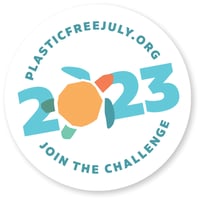With COP26 now finished and many still trying to establish if anything was actually agreed that...
Greenwashing
Greenwashing is a form of marketing spin in which green marketing is deceptively used to persuade the public that an organisation’s products, aims, and policies are environmentally friendly. Environmentalist Jay Westerveld coined the term “greenwashing” in 1986, in a critical essay inspired by the irony of the “save the towel” movement in hotels that had little impact beyond saving hotels money in laundry costs. The idea emerged in a period when most consumers received their news primarily from television, radio, and print media, so they couldn’t fact-check the way they could today.

Whilst greenwashing is not a new phenomenon there has been a huge uptick recently to meet consumer demand for greener products and services as growing public concerns about the environment and the climate have drawn more scrutiny on the environmental impacts of companies. As a result, 66% of consumers are happy to pay more for environmentally friendly products, highlighting the financial incentive for companies to appear sustainable.
Today, the market’s definition and interpretation of “sustainable” has now been expanded to incorporate Social and Governance issues as well, thanks to the development of Environmental, Social and Governance (ESG) as an analysis framework. As a result, comments that go beyond simple environmental claims may now be included in greenwashing activity.
Even in our industry there is a tendency to describe Document Management as a “greener” way to run your business. But is it? You may be negating the need to use paper in business by scanning it, but it’s still paper! And what about the email and cloud storage footprint?
 How do you spot greenwashing?
How do you spot greenwashing?
Due to the misleading claims, lingo, marketing, etc., spotting greenwashing can often be difficult, as organisations do their best to cloud the issue so that their claims appear to be genuine. As the world increasingly embraces the pursuit of greener practices, corporations face an influx of litigation for misleading environmental claims.
For example, the Alliance to End Plastic Waste (AEPW) – a Singapore-based non-profit backed by big oil and chemical companies such as Shell, ExxonMobil, and Dow – claims to be spending $1.5 billion to clean up plastic waste in developing countries. Despite this supposed goal, AEPW not only failed to honour its promise to clean up the Ganges River in India, but its member organisations went forward with plans to produce even more plastic.
Even the bottled water industry tries to overrepresent its greenness. How many plastic bottles have you seen with colourful images of rugged mountains, pristine lakes and flourishing wildlife printed on their labels? The core theme has stayed the same, the No.1 violation is embellishing the benefit of the product or service.
 How to avoid greenwashing
How to avoid greenwashing
I think you could quite reasonably argue that using a document management system is not greenwashing, in fact quite the opposite. At the very least you are saving trees.
If consumer demand for sustainability is the frontier of our transition to a greener, fairer, and smarter global economy, here are a few basic brand greenwashing tactics to avoid:
- Fluffy language: Don’t throw around words or terms with no clear meaning (e.g., “eco-friendly” or “natural”).
- Green products vs. dirty company: Watch out for hypocrisies, such as efficient light bulbs made in a factory that pollutes rivers.
- Evocative pictures: Don’t use branding images that give an unjustified green impression (e.g., flowers blooming from exhaust pipes).
- Designations that are just not credible: Look out for obvious attempts to “green” a dangerous product to make it seem safe. (Eco-friendly cigarettes, anyone?)
- Imaginary friends: Don’t use a label that looks like a third-party endorsement but is actually made up.
- Outright lies: Never use totally fabricated claims or data.
There are plenty of socially responsible businesses telling their environmental stories to the world – and even some that aren’t but should be. The incidences of “pure greenwash” – purposeful untruths about a product’s impact – aren’t widespread. However, many examples out there do come close. The buzzwords commonly used to greenwash are a “slippery slope” and companies should educate their marketers on the ethics of green branding.
There are of course internationally recognised accreditation bodies that are not simply ‘pay to display’ (requiring continuous review and reporting to achieve or maintain – as PacSol do for ISO9001:2015) which consumers and business alike can use to try and validate claims for sustainable practices. Well known examples include the FairTrade Foundation, B Corp, ISO14001:2015 or Forest Stewardship Council.
If you’ve built a powerful brand, nothing destroys trust in a business more than consumers realising it has been lying to them about something they deeply care about.

Mike Coulthard, Managing Director. October 2022
#PacSolUK #Environment #Greenwashing



